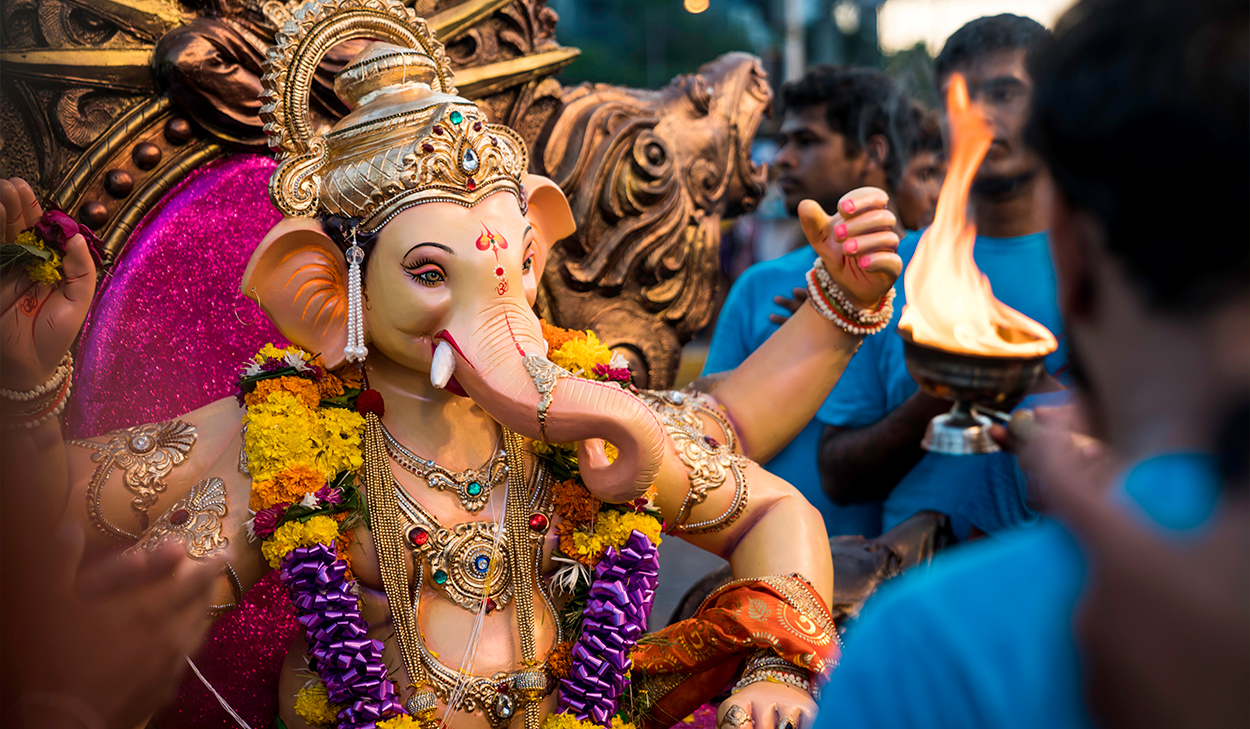
Between August and September, a festival lasting about 10 days takes place in order to celebrate the birth of Ganesh, one of the most prominent Hindu deities.
It is believed that Ganesh blesses his followers with his physical presence on Earth. Elaborate decorations and fragrant offerings are a trademark of this lively holiday. The culmination of the celebration is a triumphal procession through the streets of the city to a body of water.
It is evident that Hindus desire a connection with their gods. By learning about this holiday, Christians can better minister to their Hindu friends and understand the reason behind their beliefs, ultimately leading to fruitful gospel conversations.
Ganesh Chaturthi
According to Hindu belief, Ganesh is the child of Shiva and Parvati. In the legend, Shiva cut off Ganesh’s head during a fight. When Parvati saw what Shiva had done, she turned into the demon goddess, Kali, and vowed to destroy the Earth and all of its inhabitants. In an attempt to subdue Parvati’s rage, Shiva’s followers found an elephant that had a neglectful mother and cut off its head to offer it as a replacement for Ganesh’s head. Once the head was placed on Ganesh’s body, all was well, and this god was welcomed into the Hindu pantheon.
To start the celebrations, people construct murtis, which are idols made in the likeness of whatever deity is being honored. In this case, the idol has the head of an elephant and the body of a human. Hindu priests offer 16 formal prayers in a ritual called Shodashopachara. After this, it is believed that Ganesh comes to inhabit the idols for the duration of the festival.
Each day, families make offerings of flowers, fruit, and other small items in hopes of gaining the favor of Ganesh, who is considered the god of wisdom, stability, and prosperity. At the conclusion of the week, the idols are decorated with gold jewelry and flower chains in a ritual called Uttar Puja, which prepares them for immersion in a river or another body of water. The idols are then carried through the streets in a procession complete with singing, dancing, and chanting and are eventually immersed in water in the final step of the festival called Ganapati Visarjan. The largest celebrations are seen in the Maharashtra region of India, where Ganesh is considered a patron deity, meaning that he is the main god that is worshiped.
Gospel Opportunity
Hindus believe that Ganesh comes to indwell in the idols during the festival. They spend much of their time trying to gain his approval through offerings and rituals. This presents the perfect opportunity for Christians to share about the incarnational life of Christ and the beauty of salvation by grace alone.
God loved the world so much that He sent His only Son to us. He did not merely come for a week but instead spent 33 years on this Earth as a man. Christ died the death that we deserved and purchased for us so we can have a right standing before God through the shedding of His own blood. Whereas an elephant saved the world from Kali’s wrath, Jesus Christ willingly gave Himself as a sacrifice to save humanity from the debt of our sin.
“For the wages of sin is death, but the gift of God is eternal life in Christ Jesus our Lord.” -Romans 6:23
Salvation is not something we earn through good deeds or proper prayers, but it is a gift that we receive freely from God. In the Hindu belief, Ganesh is viewed as the “remover of obstacles.” We as believers know that Christ removed the ultimate obstacle of sin that separated us from a Holy God. His sacrifice allowed us to be brought back into a relationship with the Lord.
During this Ganesh Chaturthi, pray that Hindus around the world will be reached with the message of hope and freedom that is found in the gospel of Jesus Christ.